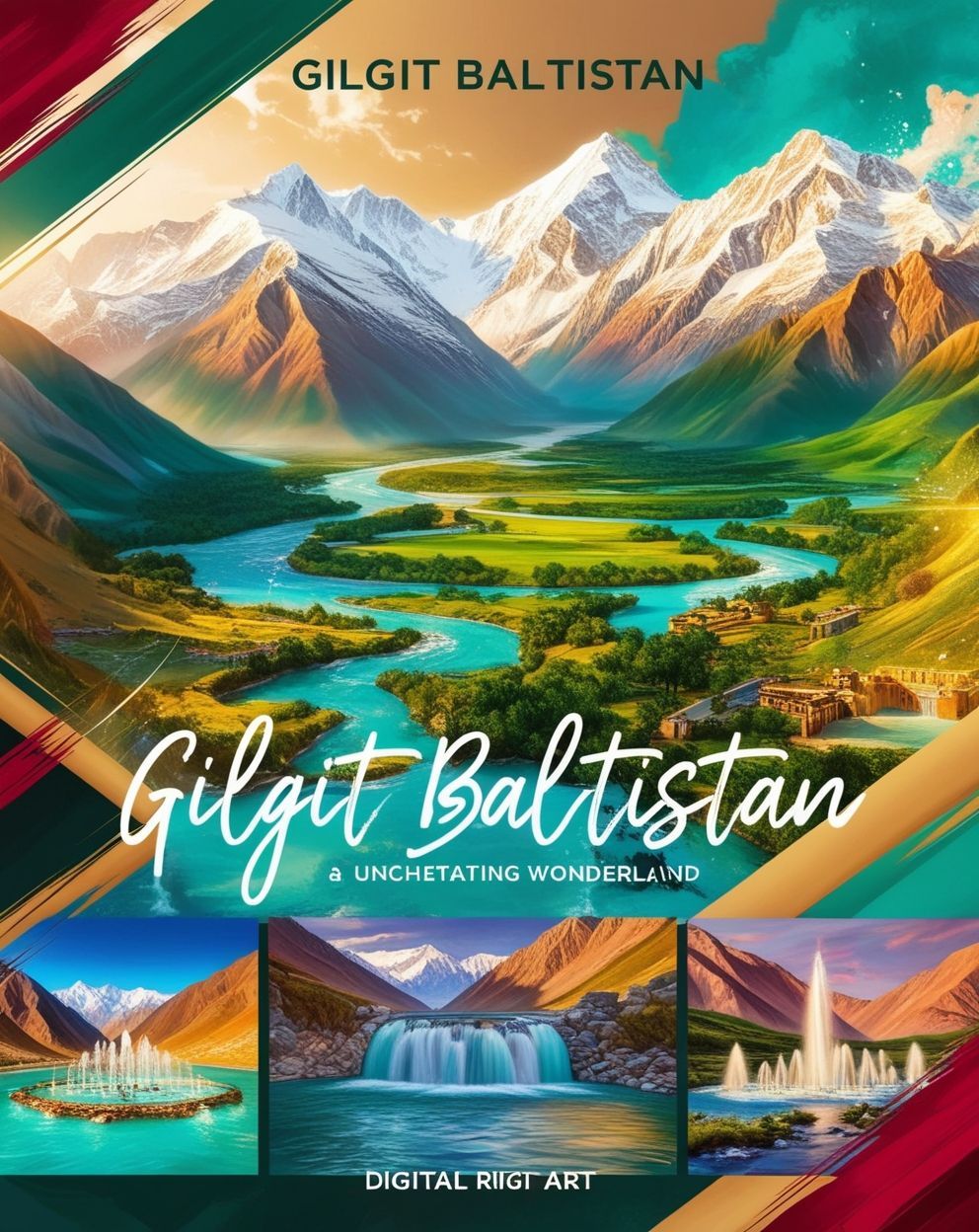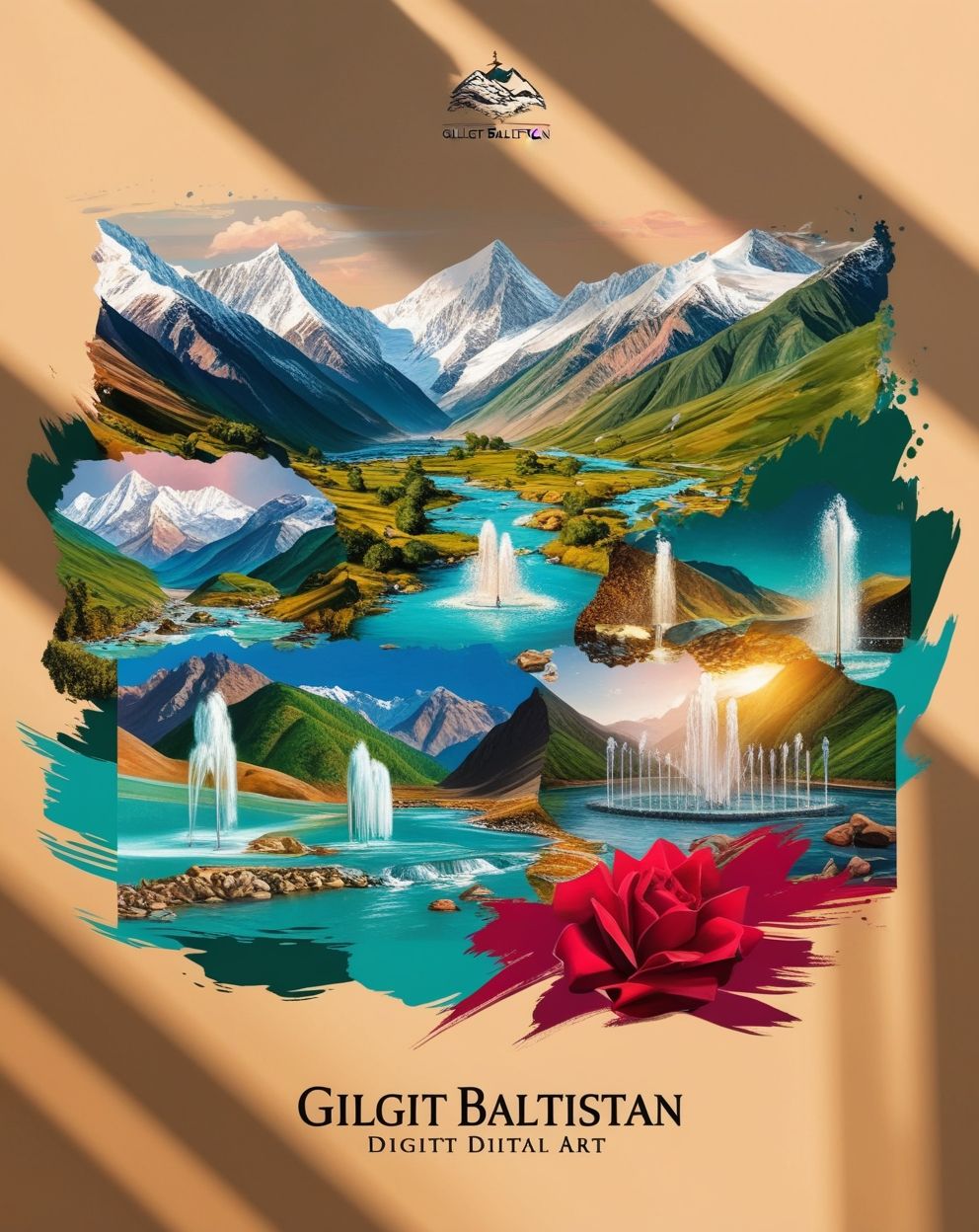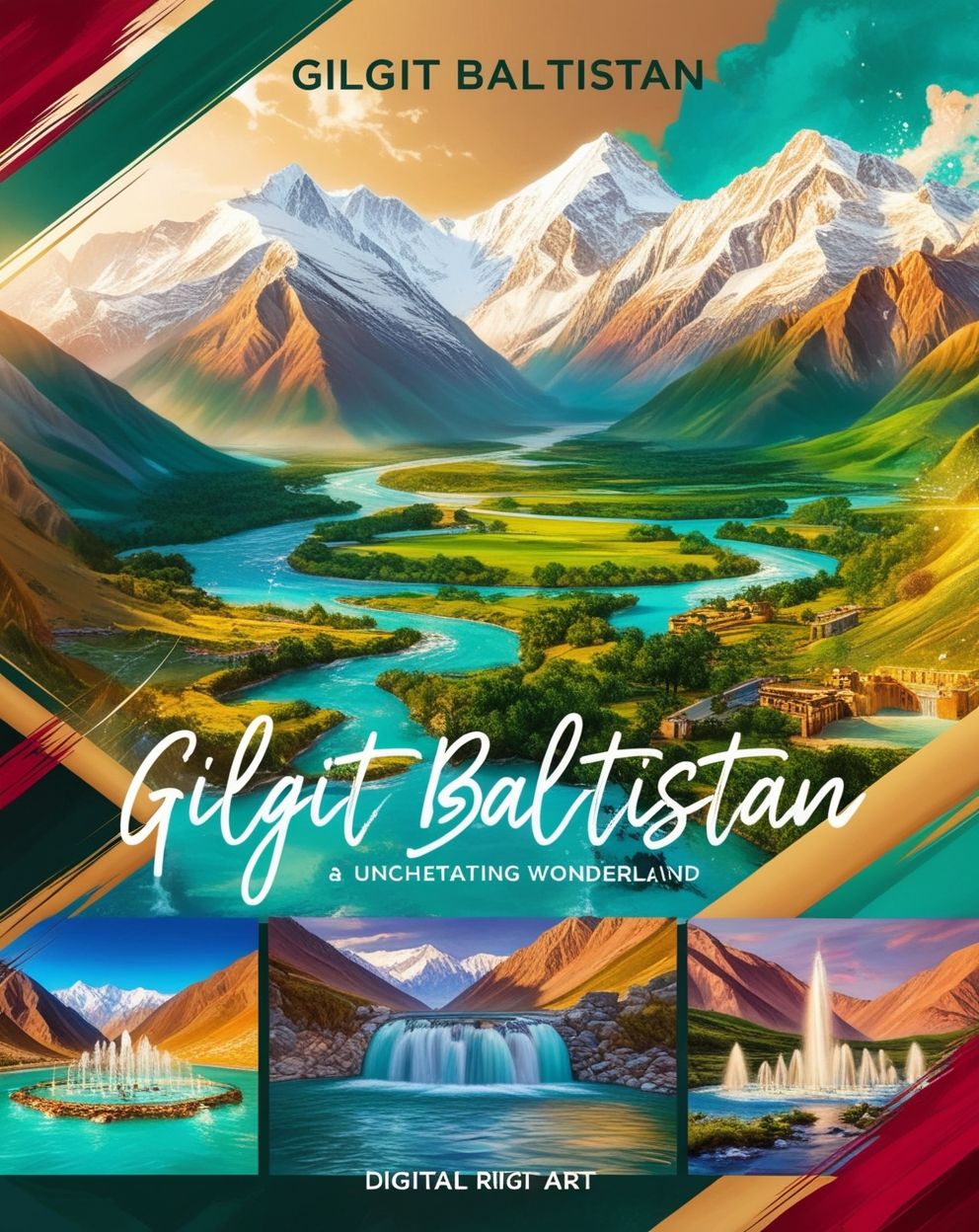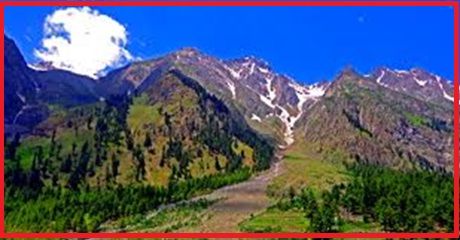Introduction
Tourism Opportunities in Gilgit-Baltistan nestled in the northernmost region of Pakistan, Gilgit-Baltistan is a treasure trove of natural beauty and adventure. This area, often referred to as the “Roof of the World,” boasts some of the world’s highest mountains, crystal-clear rivers, enchanting fountains, serene lakes, and lush green valleys. These stunning landscapes offer unparalleled opportunities for tourism and exploration. This article delves into the various aspects of Gilgit-Baltistan that make it an ideal destination for nature lovers and adventure seekers alike.

Majestic Mountains
Gilgit-Baltistan is home to several of the world’s highest peaks, including K2, the second-highest mountain on Earth. These towering giants attract mountaineers, trekkers, and adventure enthusiasts from around the globe. The Karakoram Range, which spans this region, offers a plethora of trekking routes and mountaineering challenges.
K2 and the Karakoram Range
K2, also known as Mount Godwin-Austen, stands at an awe-inspiring 8,611 meters (28,251 feet). It is a magnet for elite climbers due to its technical difficulty and harsh weather conditions. Beyond K2, the Karakoram Range features numerous peaks over 7,000 meters, such as Broad Peak, Gasherbrum I and II, and Nanga Parbat. These mountains offer diverse climbing experiences, from relatively accessible summits to some of the most challenging climbs in the world.
Treks and Trails
For those less inclined to scale towering peaks, Gilgit-Baltistan offers a variety of trekking routes that showcase the region’s breathtaking scenery. The Baltoro Glacier trek, leading to Concordia and the base camps of K2, is renowned for its stunning views and challenging terrain. The Fairy Meadows trek, providing access to the base camp of Nanga Parbat, offers a more accessible yet equally picturesque adventure.
Rivers and Waterfalls
The rivers of Gilgit-Baltistan are not only vital for the region’s ecosystem but also offer numerous opportunities for adventure and relaxation. The Indus, Hunza, and Shigar rivers, among others, meander through valleys and gorges, creating spectacular landscapes and thrilling activities.
Rafting and Kayaking
The fast-flowing rivers of Gilgit-Baltistan are perfect for white-water rafting and kayaking. The Indus River, in particular, offers challenging rapids that attract adventure sports enthusiasts. The Gilgit and Hunza rivers also provide excellent conditions for these activities, with varying levels of difficulty to cater to different skill levels.

Scenic Waterfalls
Scattered across the region are numerous waterfalls that add to the scenic beauty of Gilgit-Baltistan. The Manthokha Waterfall in Kharmang Valley is one of the most spectacular, with water cascading down from a height of over 180 feet. Other notable waterfalls include Phander and Satpara, which offer tranquil spots for picnicking and photography.
Enchanting Lakes
The lakes of Gilgit-Baltistan are renowned for their pristine beauty and serene environments. These natural wonders offer visitors a chance to unwind, reflect, and immerse themselves in the region’s tranquility.
Attabad Lake
Formed in 2010 due to a massive landslide, Attabad Lake in the Hunza Valley has become a major tourist attraction. The turquoise waters of the lake, surrounded by rugged mountains, create a mesmerizing landscape. Boating, fishing, and jet skiing are popular activities here, while the newly constructed tunnels and bridges around the lake have made it more accessible to tourists.
Sheosar Lake
Located in Deosai National Park, Sheosar Lake is one of the highest lakes in the world, situated at an elevation of about 4,142 meters (13,589 feet). The lake’s crystal-clear waters reflect the surrounding snow-capped peaks, creating a stunning panorama. The area around Sheosar Lake is also rich in wildlife, offering opportunities for wildlife photography and nature walks.
Rama Lake
Rama Lake, located near Astore, is another gem in Gilgit-Baltistan’s crown. Surrounded by lush green meadows and dense forests, the lake offers a peaceful retreat for nature lovers. Trekking to Rama Lake provides visitors with an opportunity to explore the region’s diverse flora and fauna.
Lush Green Valleys
The valleys of Gilgit-Baltistan are renowned for their verdant landscapes, rich cultural heritage, and hospitable communities. These valleys offer numerous opportunities for trekking, cultural exploration, and relaxation.
Hunza Valley
Hunza Valley is perhaps the most famous valley in Gilgit-Baltistan, known for its stunning scenery, vibrant culture, and warm hospitality. The valley is home to several ancient forts, such as Baltit and Altit, which offer a glimpse into the region’s history. The terraced fields, fruit orchards, and picturesque villages make Hunza a perfect destination for leisurely exploration and cultural immersion.

Skardu Valley
Skardu Valley serves as the gateway to some of the highest peaks in the Karakoram Range. The valley’s dramatic landscapes, including the surreal Katpana Desert (Cold Desert), Shigar Fort, and Satpara Lake, offer diverse attractions for tourists. Skardu is also a hub for trekking and mountaineering, providing access to the famous Baltoro Glacier and other trekking routes.
Nagar Valley
Nagar Valley, located across the Hunza River, offers equally stunning landscapes and rich cultural experiences. The valley is less frequented by tourists, making it a perfect destination for those seeking solitude and untouched natural beauty. The Rakaposhi and Diran peaks dominate the skyline, providing breathtaking views for trekkers and climbers.
Exploring Cultural and Historical Sites
In addition to its natural beauty, Gilgit-Baltistan is rich in cultural and historical sites. The region’s unique blend of Buddhist, Islamic, and indigenous influences is reflected in its architecture, art, and traditions.
Rock Carvings and Petroglyphs
The rock carvings and petroglyphs scattered across Gilgit-Baltistan offer a glimpse into the region’s ancient history. These carvings, dating back to various periods, depict scenes from daily life, religious symbols, and historical events. The petroglyphs found in the Karakoram Highway, particularly in the Hunza and Skardu regions, are of significant archaeological interest.
Fortresses and Monasteries
The ancient fortresses and monasteries of Gilgit-Baltistan provide insight into the region’s historical and cultural heritage. Baltit and Altit forts in Hunza, Shigar Fort in Skardu, and Khaplu Palace are notable examples of the region’s architectural heritage. These structures, often perched on strategic hilltops, offer panoramic views of the surrounding landscapes and a sense of the region’s historical significance.

Local Festivals and Traditions
Local festivals and traditions offer visitors an opportunity to experience the vibrant culture of Gilgit-Baltistan. The Shandur Polo Festival, held annually at the Shandur Pass, is a major attraction, featuring traditional polo matches between teams from Gilgit and Chitral. The Harvest Festival, Nowruz, and other cultural events provide a chance to witness traditional music, dance, and customs.
Conclusion
Gilgit-Baltistan is a paradise for tourists seeking natural beauty, adventure, and cultural exploration. The region’s majestic mountains, crystal-clear rivers, enchanting lakes, and lush green valleys offer diverse opportunities for tourism and adventure. By preserving and promoting these natural and cultural treasures, Gilgit-Baltistan can continue to attract visitors from around the world, contributing to the region’s sustainable development and cultural heritage preservation. Whether you are a mountaineer, trekker, cultural enthusiast, or nature lover, Gilgit-Baltistan promises an unforgettable experience that will leave you in awe of its unparalleled beauty and rich cultural tapestry.

i2bl7u
1sp4us
y5arhk
1en60b
You are my breathing in, I possess few web logs and rarely run out from post :). “Actions lie louder than words.” by Carolyn Wells.
qv26ee
me encantei com este site. Pra saber mais detalhes acesse o site e descubra mais. Todas as informações contidas são informações relevantes e exclusivos. Tudo que você precisa saber está está lá.
Regards for this post, I am a big fan of this internet site would like to go on updated.
Deference to post author, some superb selective information.
I really appreciate this post. I have been looking everywhere for this! Thank goodness I found it on Bing. You’ve made my day! Thank you again!
Heya i am for the first time here. I found this board and I find It truly useful & it helped me out a lot. I hope to give something back and help others like you helped me.
Good write-up, I?¦m regular visitor of one?¦s web site, maintain up the nice operate, and It is going to be a regular visitor for a lengthy time.
An impressive share, I just given this onto a colleague who was doing a little analysis on this. And he in fact bought me breakfast because I found it for him.. smile. So let me reword that: Thnx for the treat! But yeah Thnkx for spending the time to discuss this, I feel strongly about it and love reading more on this topic. If possible, as you become expertise, would you mind updating your blog with more details? It is highly helpful for me. Big thumb up for this blog post!
Heya i am for the first time here. I came across this board and I find It really helpful & it helped me out a lot. I am hoping to offer one thing again and aid others like you aided me.
Usually I do not read article on blogs, but I would like to say that this write-up very forced me to try and do it! Your writing style has been amazed me. Thanks, quite nice article.
Hello! I could have sworn I’ve been to this blog before but after browsing through some of the post I realized it’s new to me. Anyways, I’m definitely happy I found it and I’ll be book-marking and checking back frequently!
I am delighted that I detected this blog, just the right info that I was searching for! .
Howdy would you mind sharing which blog platform you’re working with? I’m looking to start my own blog in the near future but I’m having a difficult time choosing between BlogEngine/Wordpress/B2evolution and Drupal. The reason I ask is because your design and style seems different then most blogs and I’m looking for something completely unique. P.S My apologies for getting off-topic but I had to ask!
There is noticeably a lot to identify about this. I consider you made some good points in features also.
Some genuinely good information, Sword lily I discovered this.
Magnificent web site. Lots of helpful info here. I am sending it to several buddies ans also sharing in delicious. And of course, thank you to your effort!
I conceive you have remarked some very interesting points, thankyou for the post.
Thanks for sharing excellent informations. Your site is so cool. I am impressed by the details that you have on this website. It reveals how nicely you perceive this subject. Bookmarked this web page, will come back for extra articles. You, my pal, ROCK! I found just the information I already searched all over the place and simply couldn’t come across. What an ideal site.
Howdy I am so excited I found your site, I really found you by mistake, while I was browsing on Bing for something else, Nonetheless I am here now and would just like to say cheers for a fantastic post and a all round entertaining blog (I also love the theme/design), I don’t have time to read through it all at the moment but I have bookmarked it and also added your RSS feeds, so when I have time I will be back to read much more, Please do keep up the awesome job.